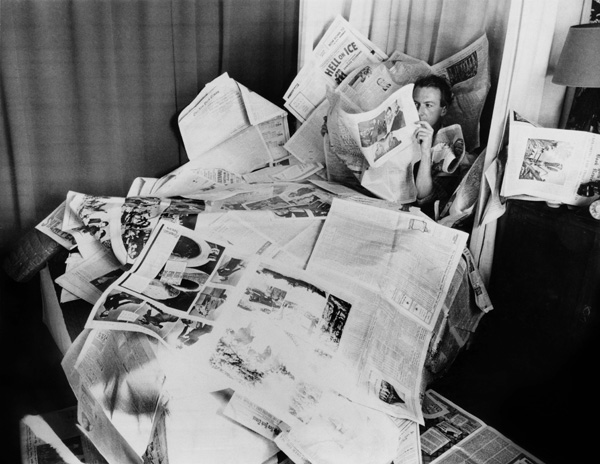Portrait photographer of everyone from Marilyn Monroe to Great Britain’s royal family, Cecil Beaton was a brilliant set designer, writer, filmmaker, dandy, and trendsetter who made his mark on art from the 1920s through the Swinging Sixties and the 1970s. He was also a tireless social climber and a frightful snob. Lisa Vreeland Immordino’s genteel Love, Cecil comes to praise Beaton’s artistry, staying well clear of a deeper look at this 20th-century Queen of Mean.
Born to an upper-middle-class family, Cecil Beaton was obsessed with art, decoration, and atmosphere from boyhood. At Cambridge, he took part in the theater scene, photographing and acting in productions. (“I started out with very little talent, but I was so tormented by ambition.”) Beaton, a self-described “terrible homosexualist,” joined the aristocratic milieu of the Bright Young Things in the 1920s and created for them a fantasy world of elaborate tableaux and fancy dress. His acute eye led him to New York and Vogue, where he became a celebrated designer and man about town until a bizarre, malicious act almost destroyed his career in 1938.
According to the documentary, Beaton buried the tiny word “kike” in an illustration, which caused 130,000 copies of Vogue to be turned into pulp. Well, the incident added up to a bit more than that. Beaton also embedded, “Mr R Andrews ball at the El Morocco brought out all the damned kikes in town” in his drawing. He also referred to two Jewish society figures by name. By minimizing this anti-Semitic slur, the film lets the viewer know that it’s going to skate over the negative in the life of the talented Mr. Beaton.
And skate, gloss, and smooth over it does. As a limpid piano score and elegant photos roll along, Vreeland interviews style mavens such as Hamish Bowles and other figures from the design world, for whom Cecil Beaton never put down the wrong foot artistically. Beaton’s one-sided (though consummated) affair with Greta Garbo has been amply chronicled elsewhere as a star-chaser’s desperate grasp for social glory. The designer’s epic feuds and betrayals emerge as nothing but a charming quirk, although an interview with Truman Capote hints at more: “He gathers enemies the way some people gather roses.” The film gets an overdue shot of bitchy energy when we hear narrator Rupert Everett read from Beaton’s diaries, savagely excoriating Richard Burton and Elizabeth Taylor and calling Katharine Hepburn “a dried-up boot.”
Polite and punch-pulling as it is, Love, Cecil can’t help but leave you admiring Beaton’s drive and output. The onetime Bright Young Thing moved on from high society to war photography (partly as a way to atone for the Vogue mess), displaying bravery under fire. He expanded his repertoire with lavish, Academy Award-winning costumes for the films Gigi and My Fair Lady, as well as with art direction in the latter. He was a prolific writer, diarist, and illustrator, and wrote 38 books. Asked in an archival interview to explain his talents, Beaton responds: “I’m perfectly willing to take on any job that will make me a better human being.” The statement rings with both false modesty and a hunger to create—a very Beatonian conundrum.

















Leave A Comment